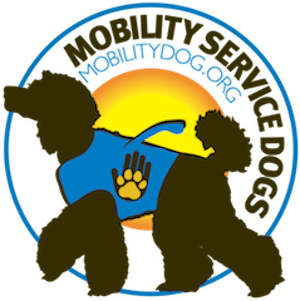Does K9 Breed Determine Dog Behavior?
Humans love to categorize things: red or blue; bride’s side or groom’s side; caffeinated or decaf. Category titles provide cognitive short-cuts. They offer easy information about the shared characteristics of the entities included in a classification. These folks are liberal; those people are the bride’s friends; that hot brown liquid will give you the jitters.
What is a “Breed?”
Dog breeds serve this same purpose. They give us insights into the traits of the animals in an identified group. In current dog-raising circles, “breed” refers to a population of closely related animals of similar appearance. They are produced and maintained from a known foundation stock through deliberate selection. The American Kennel Club recognizes 199 breeds of the perhaps 400 identified worldwide.
Each breed’s ideal physical traits, movement and temperament are set down in a document called a “breed standard.” This document notes the traits that differentiate a Cocker Spaniel from a Springer Spaniel or a Cavalier King Charles Spaniel.
But what does a dog’s breed tell us about an individual pooch? In particular, what can we conclude about Rover’s personality based on his breed?
Research suggests we should be wary of category-wide assumptions. For one thing, differences within breeds are often more evident than across-breed differences. We’ve all encountered friendly Pit Bulls, calm Chihuahuas and food-indifferent Labs. Environment and experience may dominate genetics as influencers of animal behavior.
Moreover, breed descriptors may simply be convenient generalizations that don’t stand up to rigorous scientific scrutiny. For example, studies of veterinary caseloads consistently report that the English Cocker Spaniel and the English Springer Spaniel demonstrate relatively high owner-directed aggression, belying their reputation as friendly, affectionate and even-dispositioned. Perhaps owners tend to be patient with their cantankerous spaniels, so that the definition of “aggression” becomes subjective. They think Molly is just in a bad mood; while the Fed Ex delivery guy fears the reincarnation of Cujo.
What Does K9 Breed Say about Dog Behavior?
Attempts to estimate the heritability of canine temperament and performance traits have usually obtained the most consistent results for characteristics reflecting anxiety/fearfulness, sociability, boldness and forms of aggression. In addition to breeds, however, other overriding factors are associated with patterns in these categories.
Body Size
For example, a dog’s body size appears to be linked to high levels of fearfulness and reactivity. If you are smaller than most other mammals in your world, anxiety and fear-based aggression become predictable responses. Molecular scientists have identified genes associated with an insulin-like growth factor present in toy and miniature dog breeds, but absent in wolves and other wild canids and rare among large dog breeds. Studies have shown this chemical affects not only growth and stature, but also the tendency to be fearful, reactive and excitable.
Owners of toy breeds also sometimes forego training their pets, believing that their cuddly mini-pups can’t do any real damage to the mailman. Anyone who has had an ankle nipped by a feisty Dachshund knows differently.
Show vs. Field Work
Scientists have found evidence that behavioral differences may depend on whether the individual canine was bred for show or field work. Breeding for show has been associated with lower levels of aggression, curiosity, trainability and playfulness. Dogs destined for field training, in contrast, demonstrate higher levels of both playfulness and aggression.
Ancient Breeds
Domestication of wolves, and the process of transforming them into companion animals, probably occurred around 15,000 years ago.
According to one hypothesis, grey wolves evolved into early dogs in Asia and migrated with nomadic hunters south to Africa and north to the arctic. So-called ancient breeds include the:
Basenji.
Saluki.
Chow Chow; and
Akita.
Ancient Nordic dogs, such as the Alaskan Malamute and the Siberian Husky, exhibit the closest visual and genetic relationship to the wolf. Huskies get high scores for chasing and escaping/roaming and low scores for trainability and attention-seeking. In other words, they behave more like their wolf cousins than do most other domesticated breeds.
Clues But Not Conclusions
“Pugs are lazy.”
“Greyhounds are prey-oriented.”
“Dobermans are vicious.”
“Jack Russel Terriers are hyperactive shoe-destroyers.”
Well, yes and no. Certainly, some breed-specific characteristics consistently emerge. Your Border Collie will try to herd the kids at the birthday party, and your Labrador will tend to pick things up with her mouth. Nevertheless, we owe it to our pooches to treat each individual animal for what it is: a unique bundle of genetics and experience, training and environment!





